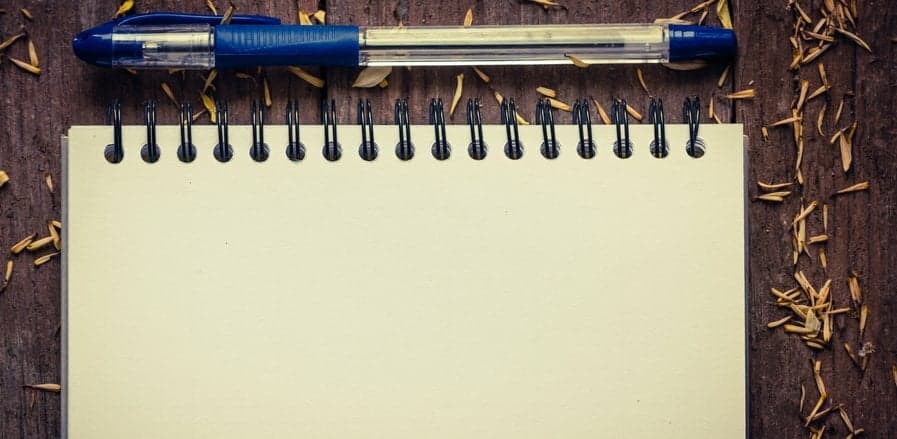Whenever people ask me for my best piece of career advice—I never have to think about it.
Write letters.
While you can read more about how writing letters has helped my success more than anything else here, I’d actually like to dive into an issue that comes up when you’re consistently writing all these thank-you notes, follow-up notes, “fan” notes, and so on.
How can you make each letter feel personalized?
OK, first things first, you might be wondering why that would matter. Isn’t just sending it enough? Yes, you get points because it is a nice gesture regardless. But there’s a difference between a generic note and a tailored one—the latter makes the recipient feel far more special, which in turn creates a much more effective letter. This is especially true if it’s a thank-you note for an interview where several employees asked you similar questions. You obviously can’t write the same note to all of them.
So with that in mind, here are the techniques I use to make each letter I send feel unique.
1. Incorporate a Very Specific Detail
The best way to make a letter feel personalized is to reference something specific about the interaction or the person. This detail doesn’t have to be as big as, “It was so fun when we realized we were in the same fraternity” (although that would be a great one!). It can be as small as, “As I mentioned when we met, you’ve got the coolest business cards! How did you come up with such a creative design?”
I usually think back to our discussion and find at least one thread to reintroduce in my letter.
2. Take Advantage of LinkedIn
Maybe your conversation was so quick and nondescript that you can’t think of anything to use in your note. When that happens to me, I’ll turn to LinkedIn.
There’s usually some great letter fodder in your connections’ summaries. Maybe the professional I’m writing to was born and raised in Ireland; I’ll add a line like, “I noticed on your LinkedIn you grew up in Ireland. I love it there—do you get the chance to go back often?”
Or perhaps the person’s included her nonprofit involvement. I’ll say, “I saw SummerStage listed on your LinkedIn, and I’m so impressed you’re involved with such a huge and impactful organization. What’s been your most fulfilling experience with it so far?”
Side note: I use questions to encourage people to write back and keep the conversation going. They won’t always respond, but they’re far more likely to if you give them a reason.
3. Bring Up Their Hobbies
As a last resort, I will incorporate someone’s hobbies into my letter. There isn’t a single place you can go to find a person’s outside interests, but Facebook and Instagram are good places to start.
I’ve used the most random details (that I can easily find on public profiles). One time, I saw a woman recently posted a picture of her Maltipoo on Instagram, so I said, “Your dog is so cute! I have a two-year-old Maltese of my own. (Yes, I stalked you on Instagram.)”
Another time, I wrote, “Your food photos are amazing. I’m so curious to know more about your cooking career. When did you decide to leave the restaurant world and go into marketing?”
As long as you make it clear where you found your info, people (usually) won’t be creeped out—they’ll be flattered.
4. Use My Secret Weapon
Fine, I have one last technique I use. It sounds slightly stalker-y, but I swear it works. When I’m writing to someone I’ve never met, I’ll search [name] + [Goodreads]. If you like to read, you’ve probably browsed Goodreads at least once; it’s the world’s largest site for book recommendations. And the best part (for my purposes)? If you’ve got a public account, there’s a record of the books you’ve read and your ratings.
Let’s imagine you’re writing to me. You search “Aja Frost Goodreads” and my account comes up.
You see that I gave Bring Up the Bodies, by Hilary Mantel, four stars out of five. You’ve never read it, but you have read and loved another historical fiction book: Elizabeth I.
So you write:
I found your Goodreads account and saw you liked Bring Up the Bodies. Have you tried Elizabeth I, by Margaret George? I found it fascinating; Elizabeth was such a complex, fascinating woman. Let me know if you read it.
Not everyone has a Goodreads account, but if they do, I always feel like I’ve hit the jackpot. Giving book suggestions is a super easy way to add value, and it works whether you’re writing to a CEO or an entry-level professional. After all, anyone enthusiastic enough about books to create a profile and rate them is probably excited to hear from a fellow fan.
Put it All Together
Like I said, people can tell the difference between a one-size-fits-all letter and a personalized one. This one is meant as an example, not a template.
Dear Jacob,
Thank you again for meeting me for coffee on Wednesday. Not only did you give me some valuable insight into life as a professional editor, I also really appreciated everything you were able to share about startup culture versus corporate culture and working for your company specifically.
Also, since we were discussing plays, I wanted to give you a recommendation. Have you seen “Fun Home?” I just saw it last weekend and it was hilarious.
Thank you again,
Aja
Composing a thoughtful, individualized letter is definitely time-consuming. But besides getting much better results than a generic one, it’s also more fun to write. (And if you want a letter from me, send me your email address on Twitter!)

